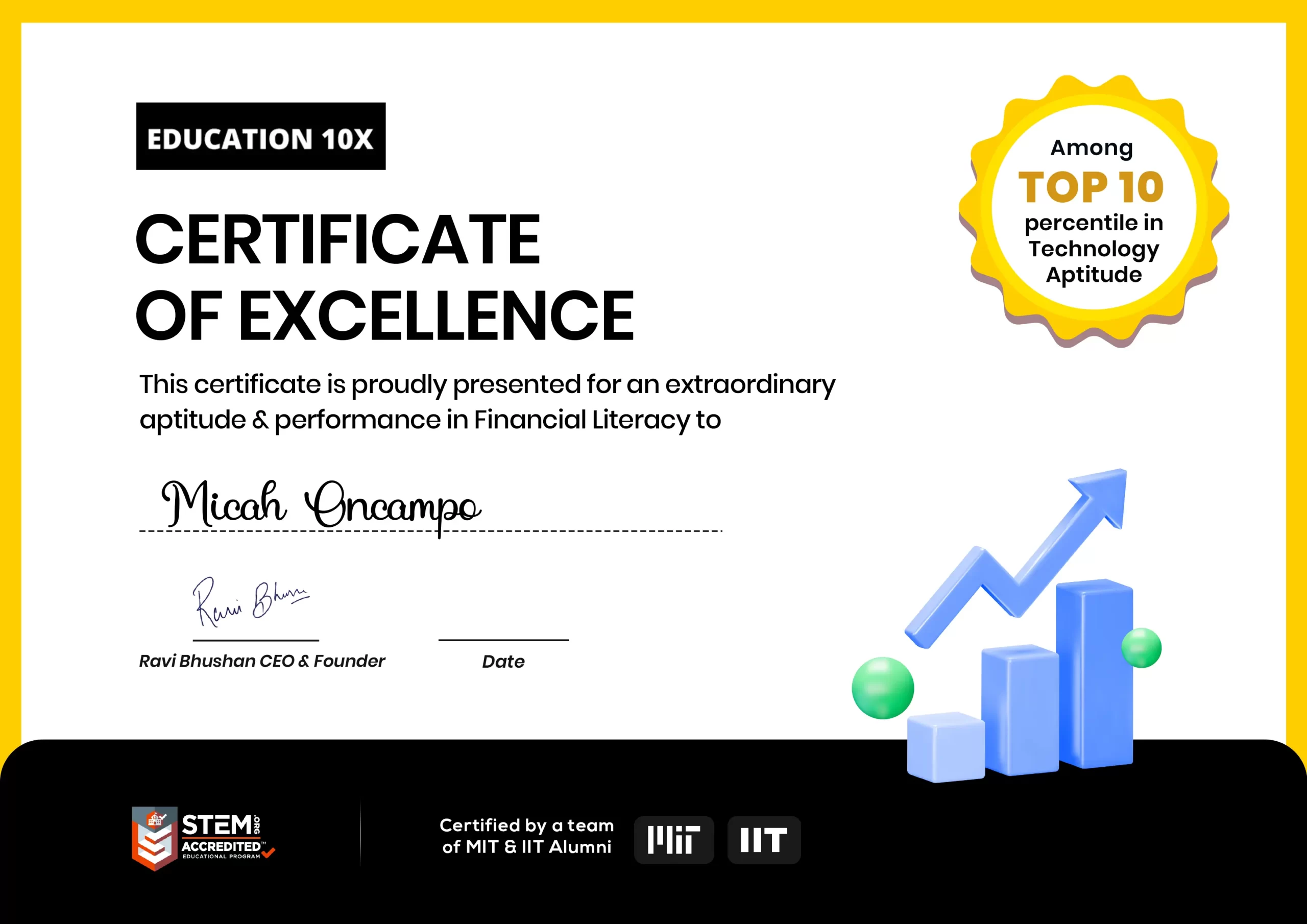Teaching children about money and instilling good financial habits at a young age is crucial for their future financial well-being. Budgeting skills play a vital role in managing personal finances effectively. By introducing your kids to the concept of budgeting and savings early on, you can help them develop a strong foundation for financial success.
Budgeting 101, will provide you with practical tips and strategies to teach your kids about money, budgeting, and the importance of saving. By imparting these essential life skills, you can empower your children to make wise financial decisions and set them on the path to a secure financial future.
Table of contents
- Introduction to Budgeting and Teaching Kids About Money
- Starting the Conversation: Tips for Talking to Your Kids About Money
- The Basics of Budgeting: How to Create a Budget with Your Kids
- Needs vs. Wants: Understanding the Difference and Making Smart Choices
- Fun Money Management Activities for Kids
- Common Money Management Mistakes Kids Make and How to Avoid Them
- Resources for Teaching Kids About Money and Budgeting
- Conclusion
- Frequently Asked Questions
Introduction to Budgeting and Teaching Kids About Money
Learning good money management skills during our formative years can have a profound impact on our financial well-being in the long run. In this blog section, we will explore some of the key benefits of acquiring financial literacy for kids at a young age.
Financial Independence:
By mastering money management skills at a young age, individuals gain a sense of financial independence. Understanding concepts such as budgeting, saving, and investing enables young people to make informed decisions about their personal finances. They become less reliant on others for financial support and develop a strong sense of responsibility for their financial future.
Building a Strong Foundation:
Learning about money management early on allows individuals to establish a solid foundation for their financial health. They can develop good habits, such as setting financial goals, tracking expenses, and living within their means. These habits, when practiced consistently, lay the groundwork for a lifetime of financial stability and success.
Avoiding Debt and Financial Stress:
The knowledge of effective money management helps young individuals avoid the pitfalls of debt and financial stress. Understanding the importance of saving and budgeting helps them develop a healthy relationship with money, ensuring they don’t fall into the trap of overspending or relying on credit unnecessarily. By learning to live within their means, they can steer clear of the burdensome cycle of debt and enjoy a more stress-free financial life.
Creating Opportunities:
Good money management skills can open doors to a world of opportunities. Young individuals who understand how to handle their finances are better equipped to make strategic choices about education, career, and investments. They can save for college, pursue their entrepreneurial dreams, or invest in their future, giving them a head start in building wealth and achieving their goals.
Developing Long-Term Financial Security:
The earlier individuals learn money management skills, the longer they have to grow their wealth. By understanding concepts like saving, investing, and compound interest, young people can make smart financial decisions that contribute to their long-term security. Starting early allows them to harness the power of time and leverage it to build wealth gradually.

Starting the Conversation: Tips for Talking to Your Kids About Money
By introducing financial concepts at an early age, parents can help their kids develop healthy money habits and make informed financial decisions in the future. However, it’s crucial to consider age appropriateness when discussing financial topics with children.
In this blog post, we will explore some practical and engaging ways to introduce financial concepts to kids at different stages of their development.
Preschoolers (Ages 3-5):
Preschoolers are curious and eager to learn, making it an ideal time to introduce basic financial concepts. Start by teaching them the value of money and by taking money lessons for kids through hands-on experiences, such as pretend play with toy cash registers or piggy banks.
You can explain that money is used to buy things they want, emphasizing the concept of saving for desired items. Additionally, encourage them to differentiate between needs and wants, and help them understand the importance of sharing and charitable giving.
Elementary School (Ages 6-10):
Elementary school-aged children can begin to grasp more complex financial ideas. Consider introducing the concept of an allowance to teach them about earning, saving, and spending money responsibly. Help them set savings goals, like saving for a toy or a special outing, and discuss the concept of delayed gratification.
Encourage them to make simple choices between spending now or saving for something bigger later. Additionally, involve them in grocery shopping, comparing prices, and budgeting for family activities, which can foster a sense of value and budget consciousness.
Tweens and Early Teens (Ages 11-14):
As children enter their preteen and early teen years, it’s essential to expand their financial knowledge further. Encourage them to open a bank account, explaining concepts such as interest, deposits, and withdrawals.
Teach them about budgeting by involving them in planning and tracking expenses for their personal needs, like clothing or entertainment. Introduce the concept of earning money through part-time jobs, such as babysitting or lawn mowing, to develop a strong work ethic and financial independence.
High Schoolers (Ages 15-18):
In high school, teenagers are on the cusp of adulthood, and financial education becomes even more critical. Teach them about credit cards, loans, and interest rates, emphasizing the importance of responsible borrowing and avoiding debt traps.
Introduce the idea of investing and the power of compound interest, explaining how saving and investing early can lead to long-term financial security, all part of a comprehensive approach to financial education for kids. Encourage them to set financial goals, like saving for college or a car, and guide them in creating a realistic plan to achieve those goals.

The Basics of Budgeting: How to Create a Budget with Your Kids
Understanding Budgeting:
Budgeting is the process of allocating and managing your financial resources. It involves setting aside money for different categories of expenses, such as savings, daily needs, and discretionary spending.
Budgeting helps individuals and families prioritize their financial goals and track their progress toward achieving them, while incorporating activities for kids can make the learning experience fun and engaging. By introducing your children to budgeting, you can instill in them a sense of financial responsibility and the importance of planning ahead.
Creating a Budget with Your Kids:
Start with the Basics:
Start by introducing your kids to the idea of income and expenses. Help them realize that expenses are the charges incurred for various purposes, whereas income is the money received. Stress the value of preserving some of their money for future needs and aspirations.
Define Goals:
Sit down with your children and talk about their financial objectives. It might be putting money aside for a family vacation, a new toy, or charitable giving. Encourage them to consider both short-term and long-term goals because doing so will give their budgeting a sense of direction.
Track Income and Expenses:
Instruct your kids in keeping track of their earnings and outgoing costs. This might take the shape of a straightforward notebook or a budgeting app. Help them distinguish between needs and wants so that they can classify their spending appropriately.
Set Spending Limits:
Establish spending caps by allocating a certain sum of money to several categories, such as savings, entertainment, education, and personal expenses. Discuss the significance of adhering to these restrictions and making wise decisions.
Involve Kids in Decision-Making:
Encourage your kids to weigh in on spending decisions and develop good habits for kids. For instance, when organizing a family outing, go over the associated costs and get everyone involved in looking for less expensive options. They will gain critical thinking and problem-solving abilities as a result of this.
Teach Delayed Gratification:
Budgeting is a great way to teach kids about the importance of delayed gratification. Encourage them to put money aside for greater expenditures as opposed to seeking immediate satisfaction. Help them realize that by budgeting and saving, they may accomplish their goals while maintaining their financial responsibility.

Needs vs. Wants: Understanding the Difference and Making Smart Choices
As parents, it’s essential to instill valuable life skills in our children from an early age. One such skill that can greatly benefit them throughout their lives is the ability to prioritize and budget for their needs before indulging in their wants.
By teaching children about financial responsibility and helping them differentiate between necessities and luxuries, incorporating reading for kids, we empower them to make wise choices and develop healthy spending habits.
In this blog section, we will explore some effective strategies for teaching your kids to prioritize and budget for their needs before their wants.
Lead by Example:
Kids frequently pick up life lessons by watching how their parents behave. It’s essential to live a prudent financial life yourself. Show them how you set financial objectives, prioritize your personal requirements, and consider all of your options before making a purchase.
Children are more inclined to emulate their parents’ good financial habits when they see them managing their own resources.
Teach Your Children the Difference Between Needs and Wants:
To assist your children in efficiently prioritizing, begin by introducing the idea of needs vs wants. Make it clear that although wants are desires or luxuries that are not necessarily necessary, needs are necessities for survival and well-being.
Talk about typical examples of necessities, such as food, clothing, shelter, healthcare, and education, using building blocks for kids to help them grasp these concepts. Then, look at desires for toys, technology, and entertainment. Children who are taught to recognize this difference will be better able to critically assess their own wishes.
Encourage Open Communication:
Provide a secure and honest atmosphere for your kids to express their wishes and needs. Encourage children to share their opinions and ask questions about various products or activities they are interested in.
Talk to them about the necessity of putting needs before wants and the compromises made when gratifying desires. You can better grasp their priorities and influence them to make good decisions by listening to their points of view.
Set Realistic goals:
One efficient technique to teach prioritization is to educate kids on how to set objectives and work towards them. Assist your children in defining their immediate and long-term objectives. For instance, assist children in the process of accumulating money to achieve their objective if they want to purchase a specific item.
Dissect the cost of the item in detail and talk about how much they would need to set aside every week or month. This activity teaches students the virtue of postponed gratification and the satisfaction of reaching one’s goals through methodical saving.
Make a Simple Budget With Your Kids:
Work with your kids to make a simple budget. Start by enumerating their usual requirements, such as clothing, extracurricular activities, and school supplies. Then, talk about their wants, such as entertainment or luxuries.
Set aside a percentage of their pay or allowance to take care of these demands, making sure that their necessities are taken care of with the remainder of the budget, a valuable lesson in finance for kids. They develop a sense of ownership and responsibility for their financial decisions by participating in the budgeting process.
Teach Wise Spending Habits:
Encourage your children to practice wise spending by encouraging them to research costs, read reviews, and take into account quality and durability before making purchases. Help them realize that making impulsive purchases can result in regret.
Teach them to distinguish between worthwhile investments and irrational costs. By teaching kids these skills, you provide them with the knowledge and resources they need to make wise choices and limit their spending.

Fun Money Management Activities for Kids
Teaching children and even adults about money management can be a challenging task. However, learning about finances doesn’t have to be dull and monotonous. By incorporating interactive games, simulations, and other activities into the learning process, we can make it not only educational but also entertaining.
In this blog section, we will explore some exciting ideas to make learning about money fun for all ages.
Financial Board Games:
A fantastic method to learn about money management in a fun and interesting way, which may include board games for kids, is through board games. The Game of Life, Monopoly, and other board games teach players how to set a budget, make investments, and make financial decisions.
These simulations let players experience the effects of their decisions in a real-world setting. People can have a better knowledge of ideas like saving, judicious spending, and future planning by participating in these board games.
Online Financial Simulations:
Online simulations provide a virtual setting in which people can experience actual financial situations. Participants can manage their fictitious funds in these simulations, choose investments, and monitor their development over time.
A variety of simulations are available on websites like Investopedia, Wall Street Survivor, or Virtual Stock Exchange to suit different degrees of financial experience. Learners can develop real-world experience and a greater comprehension of trading, investing, and the workings of financial markets through the use of these simulations.
Entrepreneurship Role-Play:
A wonderful method to learn about budgeting, making decisions, and risk management is to run your own business. Create a group or classroom exercise where students or participants can behave like entrepreneurs.
They are able to think of a business idea, create a business strategy, determine costs and earnings, and decide on marketing and pricing. Participants will learn about a variety of financial topics, including budgeting, cash flow management, and the significance of customer satisfaction through role-playing as business owners.
Budgeting Challenges:
Effective personal financial management requires the ability to efficiently manage a budget. Organise budgeting competitions in which contestants must work with a variety of scenarios and budgets.
They can set a budget for a flat, a vacation, or a week’s worth of food. Participants will learn important lessons about budgeting, saving, and making wise purchases by being encouraged to make decisions, prioritise expenses, and adhere to their spending plans.
Money-themed Quizzes and Trivia:
Everyone enjoys a good quiz, right? Make trivia questions and games with a financial theme that test players’ economics, investment, and personal finance knowledge. Include inquiries about spending limits, credit cards, interest rates, and other financial terms.
By keeping score or awarding small incentives for the top scores, make it competitive. A fun technique to reinforce financial information and pique interest in learning more is through quizzes for kids and trivia games.

Common Money Management Mistakes Kids Make and How to Avoid Them
Teaching children about money management is a crucial aspect of their education, emphasizing the importance of money management for kids. Instilling good financial habits early on can set them up for a lifetime of financial success. However, many kids make common money management mistakes that can have negative consequences later in life.
In this blog section, we will explore some of these mistakes and provide tips on how to avoid them, helping children develop a strong foundation for managing their money wisely.
Lack of Saving:
Kids frequently make the error of prioritizing spending over conserving. They might spend all of their allowance or salary without saving anything for future needs or objectives. Establish definite saving objectives for your child, such as saving for a certain item or game, to encourage them to save.
Teach children the value of postponing gratification and the joy that comes from attaining long-term objectives by saving.
Impulse Buying:
Another frequent money management error teenagers make is making purchases on a whim. They frequently spend their money quickly on things they don’t actually need or even want. Teach your youngster to consider options before making purchases to aid in the development of critical thinking abilities. Encourage children to ponder issues like “Do I really need this?” and “Will I still want it a week from now?” They will be able to make more deliberate and careful purchases as a result.
Lack of Budgeting:
Many young people struggle to grasp the idea of setting a budget and controlling their spending within a predetermined range. Without a budget, they can overpay or have trouble setting spending priorities.
By assigning a portion of their income for various uses, such as saving, spending, and giving, you may teach your child the fundamentals of budgeting. Aid them in maintaining a budget and tracking their expenditures. This will ingrain a feeling of fiscal responsibility and restraint.
Ignoring the Value of Money:
Particularly if they haven’t earned it themselves, children frequently struggle to understand the true worth of money. They could consider money to be given and fail to appreciate the effort needed to obtain it. Encourage your youngster to work a part-time job or perform age-appropriate chores to earn money. Because they earned it, kids will have a greater understanding of its value and will be more frugal with their spending.
Lack of Financial Planning:
Lack of financial planning is another typical error. It’s possible that kids won’t think about their long-term financial demands, like saving for college or other long-term objectives. Teach your youngster the value of having financial objectives and developing a strategy to accomplish them.
Talk about the idea of compound interest and the advantages of beginning early, involving questions for kids to encourage their curiosity and understanding. They will become more future-focused as a result, and they will eventually make better financial judgments.

Resources for Teaching Kids About Money and Budgeting
In today’s fast-paced and financially complex world, it’s never too early to teach children about money management and budgeting. By providing them with the knowledge and skills to make informed financial decisions, we empower them to build a strong foundation for their future.
Thankfully, there is a wide range of books, apps, online tools, and resources available that can make learning money for kids fun and engaging. In this blog post, we will explore some of the top resources that can assist you in teaching your kids about money and budgeting.
Books:
a) “Lemonade in Winter” by Emily Jenkins: This delightful picture book introduces young children to the concepts of earning, saving, and spending money through the story of siblings who start a lemonade stand in winter. It’s an engaging way to teach them about the basics of money management.
b) “The Kids’ Money Book” by Jamie Kyle McGillian: This comprehensive guide covers a wide range of financial topics, including earning money, saving, investing, and giving. It includes interactive activities, quizzes, and real-life examples, making it suitable for kids of different ages.
c) “A Smart Girl’s Guide: Money” by Nancy Holyoke: Aimed at girls aged 10 and up, this book offers practical advice on managing money, setting goals, and making smart financial decisions. It covers topics like budgeting, saving, and entrepreneurship while addressing the unique challenges girls may face.
Apps:
a) Greenlight: Greenlight is a popular app that provides a safe and controlled environment for kids to manage their money. It allows parents to allocate funds, set savings goals, and track spending. Kids can also learn about financial responsibility through chores and allowance management.
b) Savings Spree: This interactive app teaches kids about money management, goal setting, and decision-making. It uses games and challenges to encourage children to make wise choices when it comes to spending, saving, and giving.
c) ChoreMonster: ChoreMonster gamifies the chore completion process by assigning point values and rewards. It helps children understand the connection between work, money, and responsibility. Parents can set up a virtual reward system and track their kids’ progress.
Online Tools:
a) Money as You Grow: Developed by the Consumer Financial Protection Bureau, Money as You Grow offers age-appropriate activities, lessons, and resources for kids of all ages. It covers a wide range of financial topics, from basic concepts to more complex subjects like credit and debt.
b) Khan Academy: Khan Academy’s Personal Finance section provides free, high-quality educational videos and exercises on various financial topics. From budgeting to investing, kids can access comprehensive lessons tailored to their age and skill level.
c) Practical Money Skills for Life: Visa’s Practical Money Skills website offers a range of interactive tools and resources designed to teach kids about money. It includes games, calculators, and lesson plans covering topics like budgeting, saving, and responsible spending.
Conclusion
In conclusion, teaching kids about money and budgeting is of utmost importance for their financial well-being and future success. By providing children with the necessary knowledge and skills to manage their finances from an early age, we empower them to make informed financial decisions, develop responsible spending habits, and cultivate a strong foundation for financial independence.
One significant reason why teaching kids about money matters is that it instills a sense of financial responsibility and discipline. Understanding the value of money, how it is earned, and the importance of saving and budgeting helps children develop a mindful approach to spending.
They learn to differentiate between needs and wants, make informed choices, and resist impulsive purchases. These early lessons lay the groundwork for a lifetime of financial prudence, enabling individuals to better manage debt, plan for major expenses, and achieve long-term financial goals.
FinCHAMPS by BrightCHAMPS is a platform where Financial Literacy courses are offered that equips your child with new-age finance skills through our scientifically designed curriculum that deploys the right mix of academics, games, and activities to inculcate healthy financial habits in kids.
Frequently Asked Questions
Introduce them to the concept of earning money through chores or small tasks. Encourage saving, setting goals, and making informed spending decisions.
It’s recommended to start teaching kids about money as early as age 5 or 6, as they begin to understand basic concepts of value and exchange.
Start with simple explanations about money, savings, and spending. Use real-life examples, involve them in budgeting decisions, and encourage responsible money habits.
Yes, it’s important for parents to teach kids about money. Early financial education helps develop vital skills for future financial independence and responsible decision-making.
Lead by example, involve kids in family finances, encourage saving, and provide opportunities for hands-on learning experiences with money.
Start with teaching kids to recognize different coins and bills, introduce the concept of earning money, and gradually progress to budgeting, saving, and making smart spending choices.
Help them set goals and create a savings plan. Encourage saving a portion of their allowance or earnings, and teach them to resist impulsive purchases.
The 4 steps to financial literacy are: earning money, saving and budgeting, responsible spending, and understanding financial concepts like interest and investments.
Involve them in family discussions about money, encourage them to track their expenses, and introduce basic concepts of investing and financial goals.
Introduce kids to budgeting by involving them in planning for purchases, allocating money to different categories, and discussing the importance of balancing needs and wants.


 We are an army of educators and passionate learners from BrightChamps family, committed to providing free learning resources to kids, parents & students.
We are an army of educators and passionate learners from BrightChamps family, committed to providing free learning resources to kids, parents & students.







